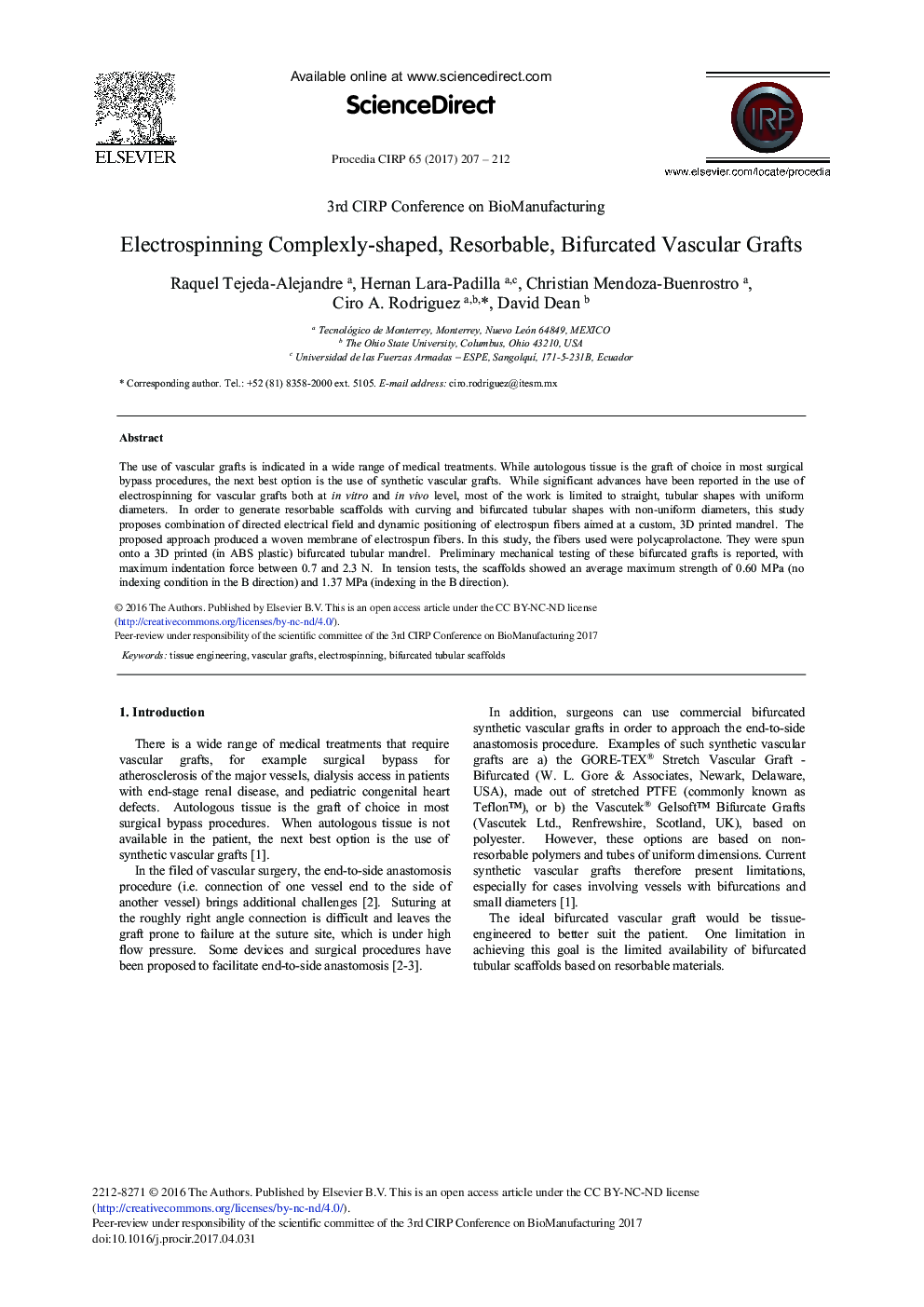| Article ID | Journal | Published Year | Pages | File Type |
|---|---|---|---|---|
| 5469664 | Procedia CIRP | 2017 | 6 Pages |
Abstract
The use of vascular grafts is indicated in a wide range of medical treatments. While autologous tissue is the graft of choice in most surgical bypass procedures, the next best option is the use of synthetic vascular grafts. While significant advances have been reported in the use of electrospinning for vascular grafts both at in vitro and in vivo level, most of the work is limited to straight, tubular shapes with uniform diameters. In order to generate resorbable scaffolds with curving and bifurcated tubular shapes with non-uniform diameters, this study proposes combination of directed electrical field and dynamic positioning of electrospun fibers aimed at a custom, 3D printed mandrel. The proposed approach produced a woven membrane of electrospun fibers. In this study, the fibers used were polycaprolactone. They were spun onto a 3D printed (in ABS plastic) bifurcated tubular mandrel. Preliminary mechanical testing of these bifurcated grafts is reported, with maximum indentation force between 0.7 and 2.3Â N. In tension tests, the scaffolds showed an average maximum strength of 0.60Â MPa (no indexing condition in the B direction) and 1.37Â MPa (indexing in the B direction).
Related Topics
Physical Sciences and Engineering
Engineering
Industrial and Manufacturing Engineering
Authors
Raquel Tejeda-Alejandre, Hernan Lara-Padilla, Christian Mendoza-Buenrostro, Ciro A. Rodriguez, David Dean,
